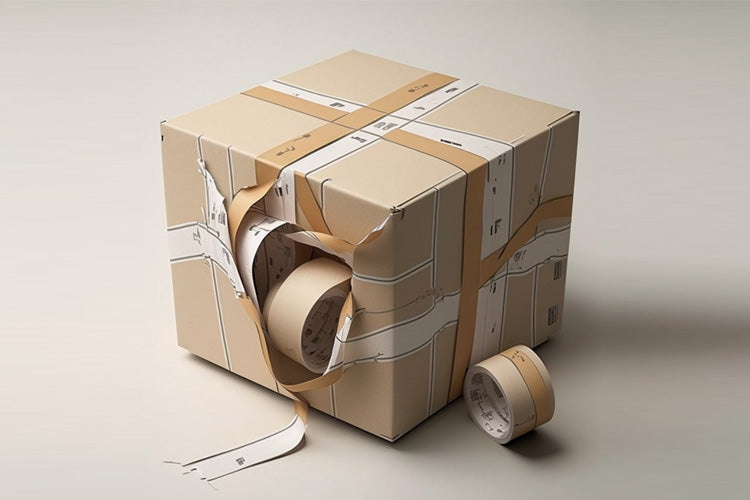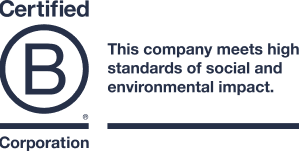Packaging tape is one of those things that we use every day, but rarely think about its environmental impact. However, most packaging tapes are made from plastic or other synthetic materials that are not recyclable, biodegradable, or compostable. This means that they end up in landfills, oceans, or incinerators, contributing to pollution, greenhouse gas emissions, and wildlife harm. As a business owner, you have the opportunity and responsibility to choose more sustainable packaging materials for your products, including eco-friendly packaging tape. In this blog post, we will guide you through the best eco-friendly packaging tape options available in 2023, and share our own experience of finding a fulfillment partner that uses eco-friendly materials.
What is Eco-Friendly Packaging Tape?
Eco-friendly packaging tape is tape that is made from natural, renewable, or recycled materials that can be easily disposed of without harming the environment. Eco-friendly packaging tape can be classified into two main types: paper tape and cello tape.
Paper Tape
Paper tape is tape that is made from kraft paper, which is a type of paper that is produced from wood pulp or recycled paper. Paper tape can be either non-reinforced or reinforced. Non-reinforced paper tape is simply kraft paper with adhesive for lighter packages, while reinforced paper tape consists of fiberglass strands for supporting heavier packages. Paper tape can also be either pressure-sensitive or water-activated. Pressure-sensitive paper tape has a sticky surface that adheres to the package when pressed, while water-activated paper tape has a dry surface that becomes sticky when moistened.
Paper tape is one of the most eco-friendly packaging tape options because it is 100% recyclable and compostable. Paper tape can be easily removed from the package and tossed into the recycling bin or the compost pile. Paper tape also has some advantages over plastic tape, such as:
- It creates a stronger seal and bond with the package, which reduces the risk of tampering or damage during transit.
- It requires less material per seal, which reduces waste and cost.
- It performs well under extreme weather conditions, such as humidity, heat, and cold.
- It can be written on or printed with custom designs or logos.
Some examples of paper tape brands are:
- Life Without Plastic Kraft Gummed Paper Tape: This paper tape is made with natural latex glue adhesive and natural kraft paper that becomes sticky when moistened. It is 100% recyclable and compostable.
- Ecoenclose Carton Sealing Tape: This paper tape pairs a cellulose backing with a rubber adhesive to bring you a plant-based, renewable, and compostable packing tape. It is pressure sensitive and safe to use on rough, smooth, and printed surfaces.
- Noissue Tape: This paper tape allows you to upload your own design, choose the size and base color, and receive a custom-made paper tape. It is water-activated and compostable.
- Package Free Kraft Tape: This paper tape is made from kraft paper with a natural rubber adhesive. It is pressure sensitive and recyclable.
Cello Tape
Cello tape is tape that is made from cellulose, which is a natural polymer derived from plants such as wood or cotton. Cello tape has a clear appearance and a smooth texture. Cello tape can also be either non-reinforced or reinforced. Non-reinforced cello tape is simply cellulose with adhesive for lighter packages, while reinforced cello tape consists of bioplastic fibers for supporting heavier packages.
Cello tape is another eco-friendly packaging tape option because it is 100% plant-derived, renewable, and industrially compostable. Cello tape can be disposed of in an industrial composting facility where it will break down into organic matter within 180 days. Cello tape also has some benefits over plastic tape, such as:
- It has a high tensile strength and elasticity, which makes it resistant to tearing and stretching.
- It has a high transparency and clarity, which makes it suitable for displaying labels or barcodes.
- It has a low static charge, which prevents it from attracting dust or dirt.
Some examples of cello tape brands are:
- BOMEI PACK Clear Biodegradable Packing Tape5: This cello tape is entirely plant-derived, renewable, and industrially compostable. It has a pressure sensitive adhesive and a high transparency.
- Impack Water Activated Tape: This cello tape is made from cellulose with a water activated adhesive. It has a high tensile strength and comes in various printed designs.
How We Found Our Eco-Friendly Fulfillment Partner
At FiveADRIFT, we are passionate about creating sustainable products that help remove plastic bottles from the ocean. Our beach towels are made from environmentally sustainable materials such as hemp and cotton, and are designed for your adventurous, travel-loving, beach-going lifestyle. However, we also care about how our products are packaged and shipped to our customers. That’s why we struggled for a long time with finding a fulfillment partner that uses eco-friendly materials.
When we started looking for a fulfillment partner, we made a spreadsheet of all the companies we could find along with all the features important to us such as same day shipping, multiple fulfillment centers close to customers, great customer support, fair pricing, etc. But we found one thing really hard to find: environmentally friendly packaging. Most of the fulfillment companies we contacted used plastic tape, bubble wrap, or other synthetic materials that are not recyclable or compostable. We wanted to avoid these materials as much as possible and use paper or cello tape instead.
The first company we partnered with promised us paper tape, cardboard boxes, and kraft paper filler inside the packaging - all curbside recyclable. We were happy with this arrangement until a few months into the relationship, they switched to plastic air pillows for filler without notifying us. We were shocked and disappointed when we found out about this change. We immediately contacted them and asked them to switch back to paper filler, but they refused, saying that plastic air pillows were cheaper and more efficient. We decided to end our partnership with them and start our search again.
As it turns out, one of the companies we removed from our original list now had the ability to promise us all paper-based or compostable packaging. They had recently switched to eco-friendly packaging solutions after receiving feedback from their clients and realizing the environmental benefits. They offered us paper tape, cardboard boxes, kraft paper filler, and cello tape as options for our packaging. We were impressed by their flexibility and responsiveness. We decided to give them a try and we have been very satisfied with their service ever since.
We are constantly evaluating our decisions for better options when it comes to sustainability. We are always looking for ways to improve our products, packaging, and processes to reduce our environmental impact and increase our social impact. We hope that this eco-friendly tape guide will help you do the same for your business. Together, we can make a difference for a better future.


